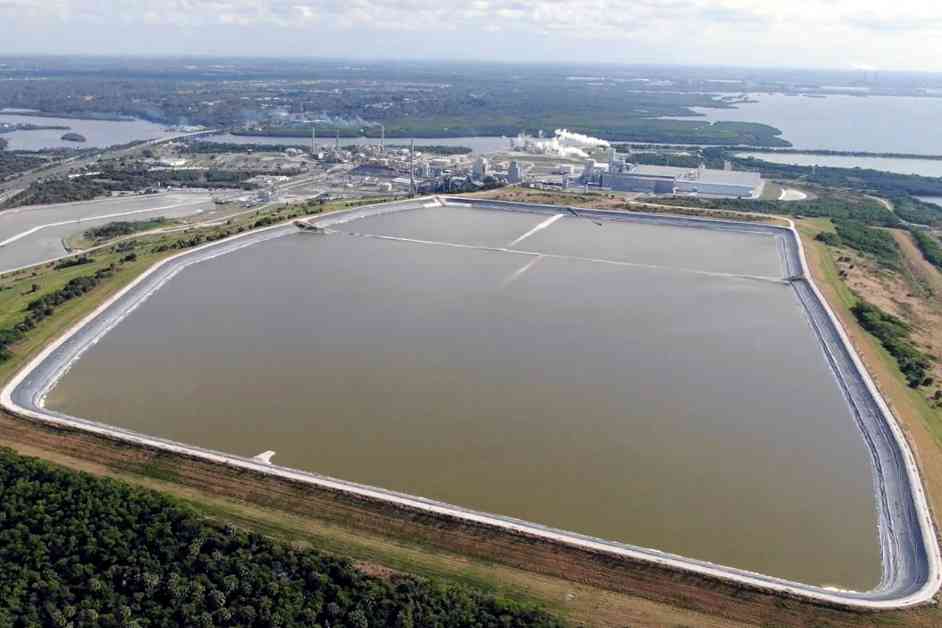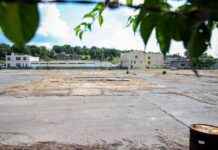Legal Challenge Against EPA for Radioactive Waste Road Plan
The U.S. Environmental Protection Agency (EPA) finds itself embroiled in a legal battle following its approval of a contentious plan to incorporate radioactive waste into a road project in late 2024. This move has sparked outrage from environmental advocates, particularly the Center for Biological Diversity, who have taken legal action against the EPA under the Clean Air Act, citing concerns about public health risks.
The focal point of this legal challenge revolves around a proposed road project at the New Wales facility of Mosaic Fertilizer, a subsidiary of The Mosaic Company, located approximately 40 miles to the east of Tampa. Despite the EPA’s approval of the project in December 2024, with stipulations to confine its application to the specific project and ensure compliance, doubts persist regarding the potential broader implications of utilizing toxic waste in road construction.
Ragan Whitlock, a Florida staff attorney at the Center for Biological Diversity, expressed apprehension about the long-term consequences of the project, highlighting the possibility of setting a precedent for future roadways constructed with hazardous waste. “Part of what makes this process so alarming, it’s not just a one-off science experiment,” he remarked. “It’s being billed as the intermediate step between laboratory testing and full-scale implementation of the idea. So our concern is that whatever methodology is used for this project will be used for national approval down the road.”
Phosphogypsum, a byproduct of the fertilizer industry, contains radium, a radioactive element that decays into radon gas, both of which are known carcinogens. Typically, phosphogypsum is stored in engineered piles called stacks to minimize public exposure to radon emissions. However, the sheer volume of this waste—over 1 billion tons in Florida alone, with an additional 40 million tons added annually—raises significant concerns about the environmental and health risks posed by its use in construction.
Mosaic’s proposed test road near its Florida stack, comprising four sections with varying phosphogypsum mixtures in the road base, has drawn attention for its collaboration with University of Florida researchers. Despite receiving numerous comments opposing the use of phosphogypsum in road construction and criticizing existing waste management practices, the EPA maintained that these concerns fell outside the scope of their review process. The agency’s decision to proceed with the project was based on the assertion that Mosaic’s risk assessment met regulatory requirements and safeguarded public health.
The EPA’s stance on the project’s safety contrasts sharply with the skepticism and apprehension expressed by environmental advocates and concerned citizens. The unresolved tension between the regulatory body’s approval and the opposition’s apprehensions highlights the complex interplay between environmental conservation, public health, and industrial interests.
Expert Insights and Reflections
Expert Perspectives on Radioactive Waste Disposal
To shed light on the technical and ethical dimensions of radioactive waste disposal, Dr. Samantha Green, a renowned environmental scientist, offers her expert insights on the challenges posed by incorporating hazardous materials into public infrastructure projects. According to Dr. Green, the potential risks associated with using radioactive waste in road construction extend far beyond immediate health concerns, encompassing broader environmental implications and long-term consequences for ecosystems and communities.
Public Response and Community Concerns
The public outcry surrounding the EPA’s approval of the radioactive waste road project underscores a growing awareness of the need for transparent, science-based decision-making in environmental policy. Community members, activists, and environmental organizations have voiced their concerns about the potential health hazards, ecological impacts, and regulatory oversight gaps inherent in projects involving toxic waste materials. This collective response serves as a powerful reminder of the vital role of public engagement in shaping sustainable, equitable environmental practices.
In conclusion, the legal challenge against the EPA for its approval of the radioactive waste road project illuminates the complex nexus of environmental protection, public health, and regulatory oversight. As stakeholders continue to grapple with the implications of incorporating hazardous waste into infrastructure development, the need for informed dialogue, rigorous oversight, and responsible decision-making remains paramount in safeguarding the well-being of communities and ecosystems alike.














